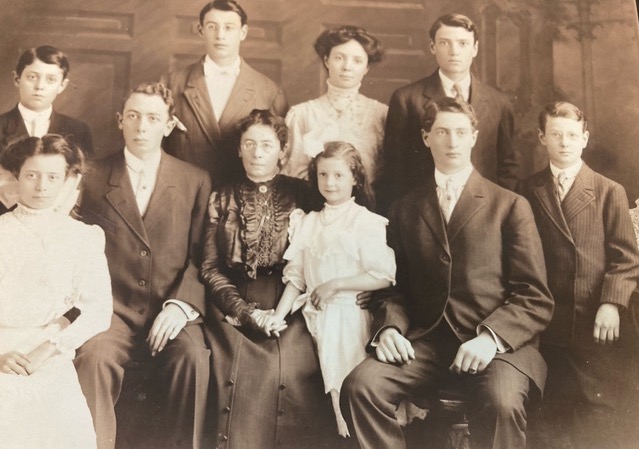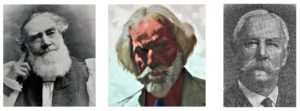The Susanne Salvestrin Memorial Lecture Series
Lecture #1, January 29, 2026 at 4pm
Is My House Historic? Find Out From an Expert
Join architectural historian Christine Madrid French, Executive Director of Napa County Landmarks, for an engaging discussion on how to determine whether your home or building may qualify as historic. Participants will learn how to research the history of their homes using maps, archives, and other local resources—and gain a deeper understanding of how historic preservation supports community character in Napa Valley.
whether your home or building may qualify as historic. Participants will learn how to research the history of their homes using maps, archives, and other local resources—and gain a deeper understanding of how historic preservation supports community character in Napa Valley.
About Christine Madrid French
Christine Madrid French is an historian and advocate for the study and preservation of American architecture. She was born and raised in Los Angeles and is a graduate of the University of Utah and the University of Virginia (MArH). She is currently the Executive Director of Napa County Landmarks in California.
She directed the Modern + Recent Past Program at the National Trust for Historic Preservation, and served as the Director of Advocacy & Programs at San Francisco Heritage. At the University of Florida, Christine taught courses at the College of Design, Construction and Planning and co-directed the first statewide survey “Mid-Century Modern Architecture in Florida (1945-75),” which was awarded a Documentation Award for Excellence by Docomomo-US.
Over the course of her career, Christine has raised more than $2.5 million for nonprofit causes in art and architecture. Her book, The Architecture of Suspense: The Built World in the Films of Alfred Hitchcock (University of Virginia Press, 2022), focusing on the real-world histories of cinematic structures, was featured in the October 2022 issue of Vanity Fair.
At the Heritage Center, 1255 Oak Ave.
Lecture #2, 2025: Thomas Snyder, M.D. discusses his book, Mare Island Naval Hospital, A History, 1864-1957
August 7, 2025
Mare Island Naval Hospital was the Navy's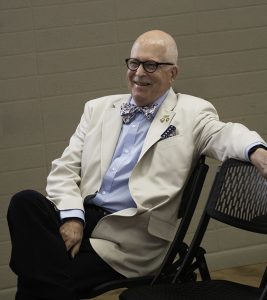 first west coast hospital. It grew from a "palatial" but primitive facility in the 1860s to the Navy's premier amputee center for Marines and sailors returning from the brutal war in the Pacific during WWII.
first west coast hospital. It grew from a "palatial" but primitive facility in the 1860s to the Navy's premier amputee center for Marines and sailors returning from the brutal war in the Pacific during WWII.
The Navy's largest California shipyard, the hospital benefited from healthful California weather that enabled the creation of a tent hospital to care for Spanish flu victims. Navy Yard engineering and mechanical skills helped create the Navy's first ambulance boats, and in World War II, the best limb prostheses available at that time.
At the Heritage Center, 1255 Oak Ave.
Lecture #1, 2025: The Tumultuous History of Vineyard Valley

February 11, 2025 @ 4:00pm
It was billed as the "ultimate park for discriminating adults", but it was a tough sell.
One of its managers was convicted on 13 counts of grand theft. Vineyard Valley suffered several catastrophic flooding episodes when Sulphur Creek and the Napa River threatened to break their banks. Residents recall being evacuated on short notice and housed at the high school or RLS Middle School. The city council was persuaded to enact rent control, which became a political hot potato in the park.




Presented by Research Director Mariam Hansen




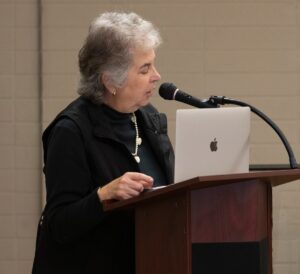
Lecture #2, 2024: Gabriel Moraga: The North Bay's Unknown Explorer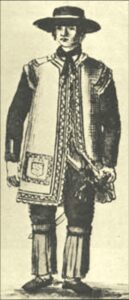
April 3, 2024 @ 4:00pm
In addition:
- The town of Moraga is named for his son, Joaquín Moraga, whose adobe is still there.
- He is responsible for naming a number of important California landmarks, including the San Joaquín River, the Sacramento River and the Merced River.
- His explorations led to founding missions north of the San Francisco Bay: San Raphael and San Francisco Solano.
- He established trade between Fort Ross and the San Francisco Presidio.
About Dr. Bacich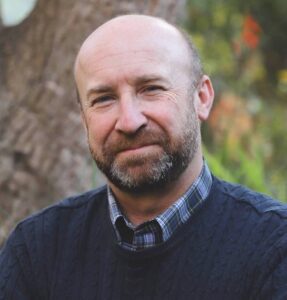
As a college student, Damian Bacich worked at the Bale Grist Mill State Historic Park, where he developed a love for California history. As Professor of Spanish-American Literature and Culture at San José State University, he specializes in researching the history and culture of pre-statehood California, especially its Spanish and Mexican periods. Damian has a Ph.D. in Hispanic Languages and Literatures from UCLA and is the founder of the California Frontier Project (www.californiafrontier. net).
At the Heritage Center Museum | 1255 Oak Avenue
Lecture #1, 2024
Pioneer Families: The Taplin Family
March 13, 2024 @ 4:00pm

The Taplins in St. Helena begins with John Orange Taplin, a dairy farmer. His great-great-great grandfather immigrated from England and was granted land in Vermont. John Orange moved his dairy west for the Gold Rush, settling first in San Francisco and then along the Silverado Trail in St. Helena (1871). He died of tuberculosis but his wife and sons took over the farm.
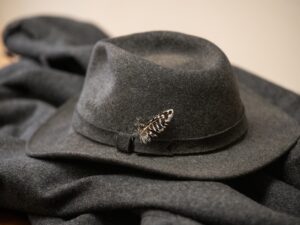
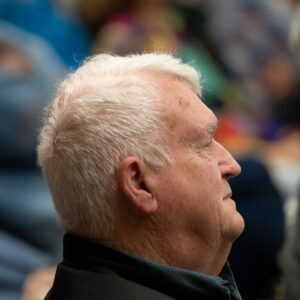
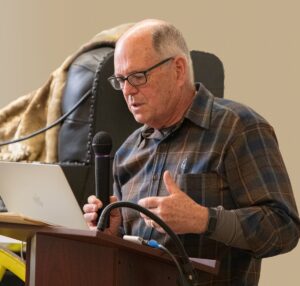

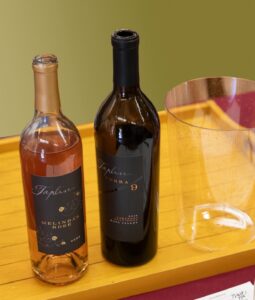
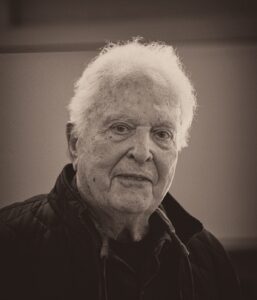
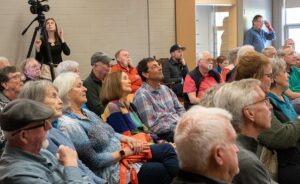
Lecture #5, 2023
Bandits, Bars and Bordellos
November 15, 2023 @ 4:00pm
The Readers Theater will be bringing Napa Valley’s history to life in an 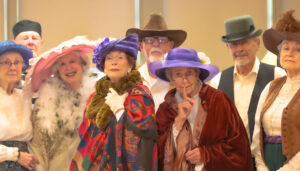 original production of "Bandits, Bars and Bordellos”. Characters are based on both real people and fictitious characters who were part of the area’s history in the late 1800s.
original production of "Bandits, Bars and Bordellos”. Characters are based on both real people and fictitious characters who were part of the area’s history in the late 1800s.
According to longtime member Dianne Fraser, “You'll meet Buck English, a slick robber who raised havoc with the stagecoaches carrying payroll to the mines during the gold rush. Sheriff Brownlee pursued a host of elusive criminals up and down the Valley. You’ll also meet two madams who competed for customers at their successful bordellos.” While most of the characters were real people, the group has embellished by adding some fictitious characters and details to enhance the narrative.
At the Heritage Center Museum | 1255 Oak Avenue
Guest Lecture with RLS Museum
Robert Louis Stevenson's Napa Valley
With SHHS Research Director Mariam Hansen
May 10, 2023 @ 5:00pm
Admission is free • At the RLSM
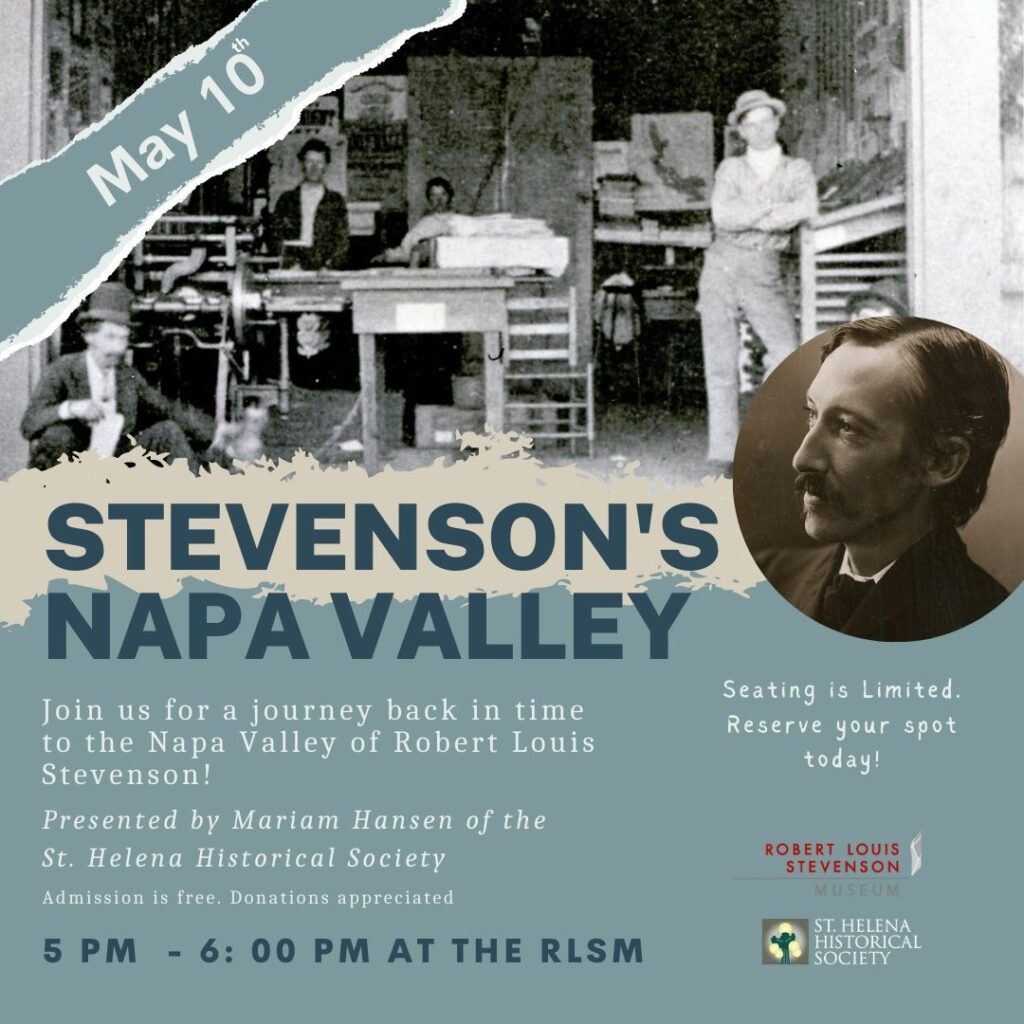
Lecture #3, 2023:
The Rise of Napa Valley Wineries: How the Judgment of Paris Put California Wine on the Map
With Dr. Mark Gudgel
May 17, 2023
Dr. Gudgel talked about his new book
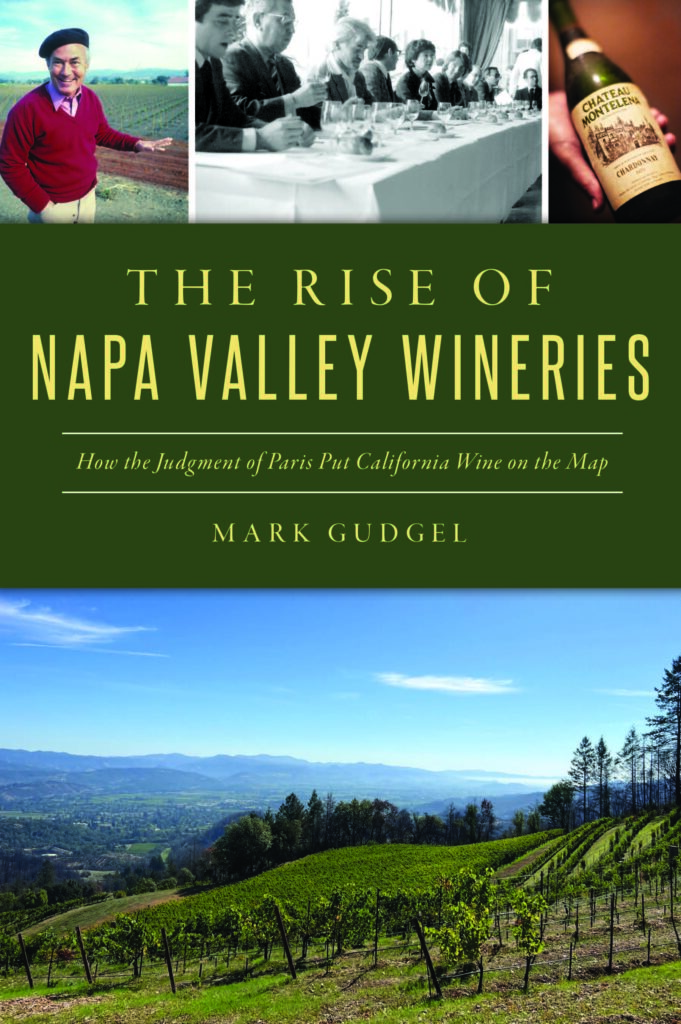
Dr. Mark Gudgel will talk about his new back that tells the story of the Judgment of Paris
In 1976, Napa wines were little known to those who lived outside the area. All that changed in 1976 when Napa wines bested those of France in a blind wine-tasting event.
Since then, the growth of the Napa Valley wine region has been explosive and is now one of the greatest wine-producing regions in the world. This story is the stuff of legends. Dr. Mark Gudgel unpacks these legends in The Rise of Napa Valley Wineries: How the Judgment of Paris put California Wine on the Map.
About the author: Dr. Mark Gudgel
Dr. Mark Gudgel is a Nebraska native. He has an Ed.D. in Character Education, is the author of numerous books and articles, and is a regular contributor to several periodicals. His book, Think Higher Feel Deeper: Holocaust Education in the Secondary Classroom, was released from Teachers College Press in 2021.
At the Heritage Center Museum | 1255 Oak Avenue
Listen to this program on our YouTube channel.
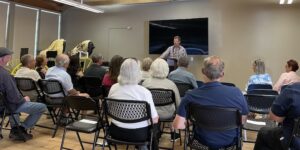
Lecture #2, 2023:
Napa Valley's Pioneer Women of Diversity and Influence
Featuring local historian Rebecca Yerger
March 16, 2023
Rebecca Yerger will be discussing some of the remarkable pioneer women of St. Helena.
It all began with the Wappos. The area's Native Americans date back some 10,000 years. In addition to the Hispanic immigrants who came to the Napa Valley and shared their dynamic culture, there were African Americans and the Chinese, a labor force that worked in vineyards, quicksilver mines, hop farms, leather tanneries, laundries and helped build the railroads--ultimately driven out by discrimination.
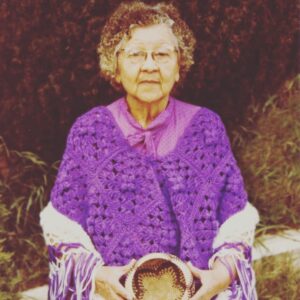
Laura Somersall, famous Wappo basket maker, lecturer, teacher and linguist. Photo courtesy of courtesy of Bellacana Vineyards
Yerger talked about the influence of Laura Somersall, a famous Wappo-Pomo basket maker, teacher, lecturer and linguist. She’ll talk about Eva Jennings, an African American who was St. Helena’s 1975 Citizen of the Year.
Emma Eels, another of these remarkable women, was one of the owners of Callustro Corporation. Callustro manufactured household cleaning products made from a refined, sand-based native stone. In the 1880s the widowed Emma Eels purchased 108 acres of UpValley property and the company planned to take on rival brand cleansers Old Dutch and Sapolio.
At the Heritage Center Museum | 1255 Oak Avenue
Lecture #1, 2023: Chinese in Napa Valley: The Forgotten Community That Built Napa Valley
January 25, 2023
The Chinese were an important labor force in the Napa Valley’s 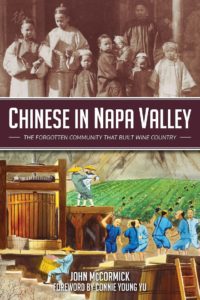 vineyards, quicksilver mines, hop farms, leather tanneries and laundries. At one time, more than 2000 residents lived here and started businesses to serve their community.
vineyards, quicksilver mines, hop farms, leather tanneries and laundries. At one time, more than 2000 residents lived here and started businesses to serve their community.
The contributions to the economy and culture did little to deter discrimination. Anti-Chinese Leagues sprang up to harass and intimidate immigrants like Chan Wah Jack, who ran the successful Sang Lung store in Napa’s Chinatown.
About the author, John McCormick. 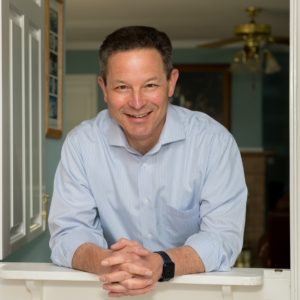 John McCormick grew up in Napa and is descended from five generations of Napa Valley residents. He received his bachelor’s in engineering from the University of California, Berkeley and his master’s in history from Harvard University.
John McCormick grew up in Napa and is descended from five generations of Napa Valley residents. He received his bachelor’s in engineering from the University of California, Berkeley and his master’s in history from Harvard University.
An in-person event at the Heritage Center Museum, 1255 Oak Ave., St. Helena
Listen to John McCormick's presentation on our YouTube channel.
Lecture #9: Congressman Mike Thompson: "Growing Up in St. Helena"
Nov. 2, 2022
The St. Helena Historical Society hosted Congressman Mike Thompson on 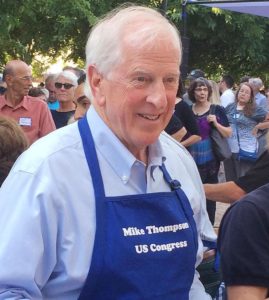 November 2 at 7:00pm at the Heritage Center Museum on 1255 Oak Avenue. Thompson, in the middle of a reelection campaign, took a night off to talk about “Growing Up in St. Helena”.
November 2 at 7:00pm at the Heritage Center Museum on 1255 Oak Avenue. Thompson, in the middle of a reelection campaign, took a night off to talk about “Growing Up in St. Helena”.
Mike shared the stage with Stephen Taplin, MD, former SHHS president. While Stephen left Napa Valley, pursued a career and came back to his hometown after 50 years, Thompson stayed right here in the community where he grew up.
Two families with deep roots in the Napa Valley
According to Taplin, “We've known each other since kindergarten. Both our families have deep roots in Napa Valley. I remember that he was a member of the Future Farmers of America, and he now owns and farms a small vineyard. Mike was friendly and eager to participate in social activities. I think it is his friendly, calm style and hard work ethic that have contributed to his success as a legislator.”
Another in-person event at the Heritage Center Museum, 1255 Oak Ave., St. Helena
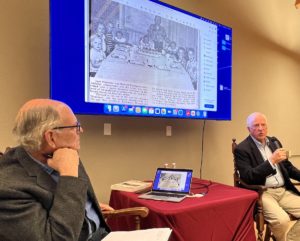
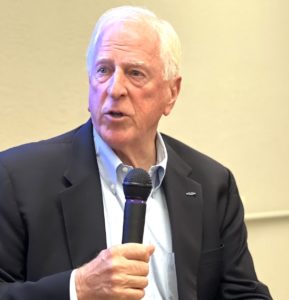
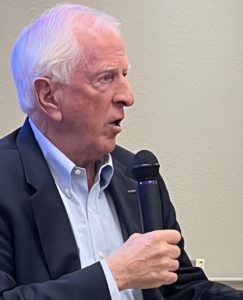
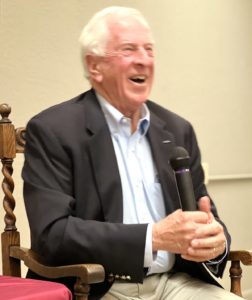
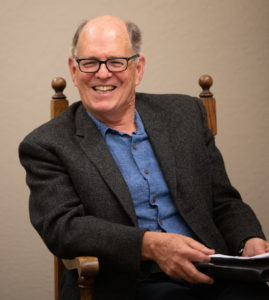
Lecture #8: The Pioneer Families of St. Helena: The Chaix Family
Sept. 14, 2022 | The Heritage Center
Our deep dive into the history of St. Helena's pioneer families continues. Lois Day, a descendant of Jean Victor Chaix, talked about the influence of the Chaix family on the St. Helena area.
descendant of Jean Victor Chaix, talked about the influence of the Chaix family on the St. Helena area.
News about Napa Valley's winemaking potential had reached France
The Chaix brothers were born in Provence, France. Jean Chaix was a horticulturist who had heard about the rich soil and winemaking opportunities in the Napa Valley. He was just 23 when he set off for California. In 1874, he began working at Yountville's Gottleib Groezinger’s cellars (now Vintage 1870), “one of the most prosperous winemaking plants in the country.” It was here that he met his future partner, Jean Adolphe Brun. It was an auspicious pairing. Brun had winemaking experience, while Chaix, the horticulturist, had experience growing grapes.
Lecture #7: The Pioneer Families of St. Helena: The Lyman Family
July 13, 2022, 7:00pm
The Lyman family name is recognized today for Lyman Park, but the first Lyman, Right Reverend Theodore Benedict Lyman, owned 800 acres in Napa County in 1871. His son William W. Lyman took over and was a member of the German Social Club, whose building was on the site of Lyman Park until 1924. When the family donated the land to the City, it was named in his honor.
The Lyman Family program is available on our YouTube channel
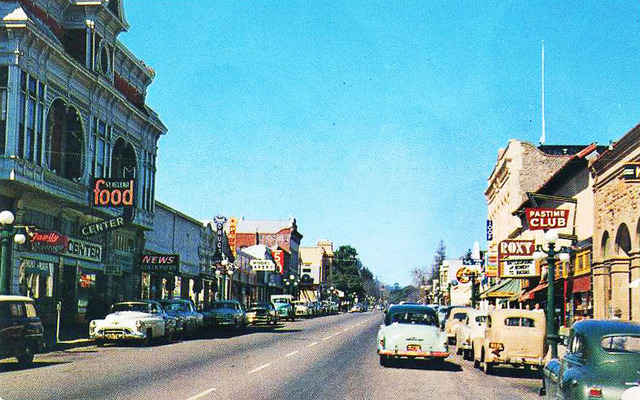
Lecture #6: Cathy Buck & The History of The Cameo Theater
June 8, 2022, 7:00pm, at the Heritage Center
The Cameo. Despite new streaming media and distribution channels, there’s still a place for those who love the smell of popcorn and the full movie-theater experience. For the old timers among us, you'll be surprised how many times our local theater has changed ownership. Each regime change came with extensive renovation--one remodel included a loge section, another included seating for 400 people!
St. Helena’s movie theater history dates back to 1909
Joe Galewsky and Julius Goodman started the G & G Theater in St. Helena Turnverein Hall. It was a wooden building on land that later became Lyman Park. In 1915 the theater was renamed the “Liberty Theatre”, and it remained a center for silent films, community events and programs for decades, seamlessly transitioning to "talkies" and technicolor.
Watch "Cathy Buck & The History of The Cameo Theater" on our YouTube channel

Lecture #5: The Braceros in the St. Helena Area
May 18, 2022, 7:00pm, at the Heritage Center
As local men went off to fight in WWII, it created an agricultural crisis, with no one to work in the fields and harvest the crops. A contract was signed between the United States and Mexico in August 1942, and a few hundred experienced Mexican agricultural laborers arrived in the Stockton area to harvest sugar beets.
They arrived by train, then were bussed to the Napa Valley. They're credited with saving the walnut, prune and grape harvests. The bracero program ultimately spread over most of the United States. By fall 1943, 700 braceros were working in the St. Helena area.
As the Braceros began building a life in the Napa Valley, they were also supporting their families back home
The hourly wage was 60 cents plus housing. Piece work, such as picking prunes by the box, was paid the prevailing wage. The braceros worked ten-hour days and were guaranteed employment 75 percent of the time.
The Braceros brought their families to join them, and like so many other ethnic groups, St. Helena became their home.
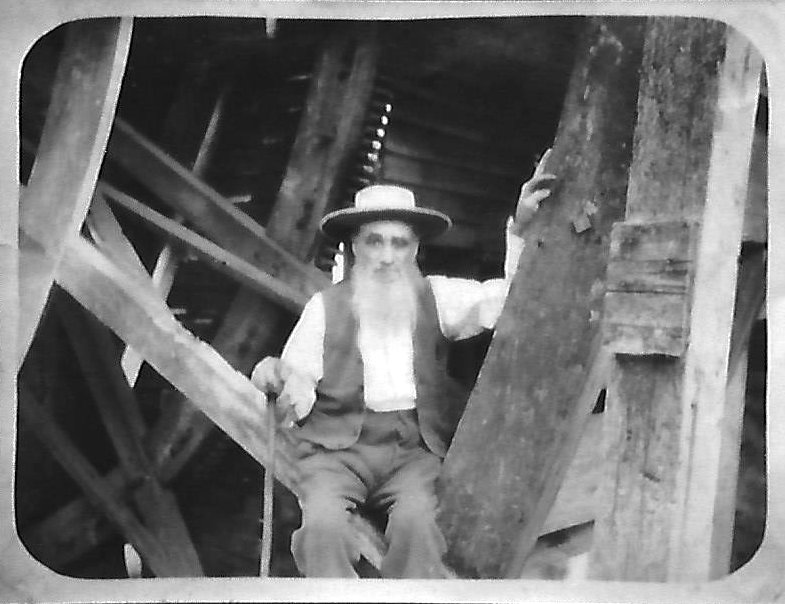
Lecture #3: Pioneer Families of St. Helena
The Yorks, Their Descendants and the Stories They Tell
Speaker: Beth Fidiam Clark, Descendant of John and Lucinda York
March 16 @ 7:00pm. Zoom information to follow
Pioneers John and Lucinda Hudson York were among the first white people to arrive in Napa Valley in 1845. Ms. Clark’s lecture will trace the roots of the Yorks and the families into which they married. You’ll hear stories of their wagon-train journey over the Sierras, of having to totally dismantle and hoist the wagons over sheer mountain cliffs.
The Yorks were involved in the Bear Flag Rebellion
Lucinda York reportedly donated her petticoats to make the Bear Flag! The family also took part in the Civil War--an event that tore the family apart.
Our speaker, Beth Fidiam Clark, is a descendant of John and Lucinda York. She has researched the extended York family and authored a book titled “St. Helena Roots: The Palmers, Thompsons, and Yorks and the Families They Joined.”
Join us for our continuing series on the Pioneer Families
You'll be surprised by some of the other descendants of the York family here in Napa Valley!
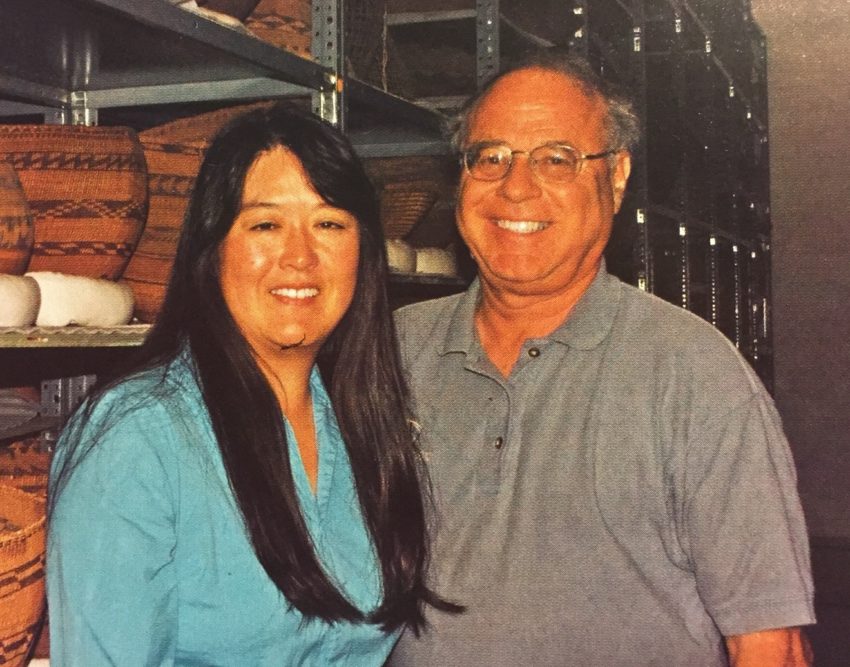
Lecture #2: Basketry of the Wappo and Central California Native Americans
Presenter: Author and Scholar Ralph Shanks
February 16 @ 7:00pm. This will be a Zoom event. Zoom info to follow
Shanks is vice president of the Miwok Archaeological Preserve of Marin, and his wife Lisa Woo Shanks is the editor of the Basketry of California and Oregon Series. They are the authors of The North American Indian Travel Guide.
He is also the author of California Indian Baskets, illustrated with photographs of rare baskets from collections from the University of California, Harvard, the Smithsonian, the British Museum, Madrid's Museo de America, Royal Museum of Scotland, Santa Barbara Museum of Natural History, Southwest Museum and other world-class museums and private collections.
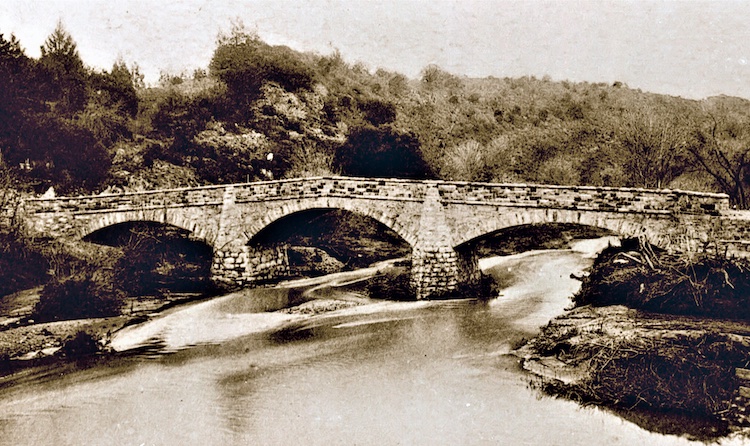
Lecture #1: Napa: County of Stone Bridges
We kicked off the Susanne Salvestrin Lecture Series with a presentation on Napa: County of Stone Bridges. Most of St. Helena's stone bridges built after the mid-1890s were replacements for old wooden spans. The stone bridges were notable for their low cost to build and maintain.
Immigrants brought their skills to their new home
Not surprisingly, it was an immigrant and famous stone builder, Scotsman Robert H. Pithie, who introduced the stone bridges to the Napa Valley. Pithie collaborated with another group of skilled immigrants, Italian stone masons, to build the Pope Street Bridge.
When: January 19 @ 7:30pm
Presented by: Mariam Hansen, SHHS Research Director

